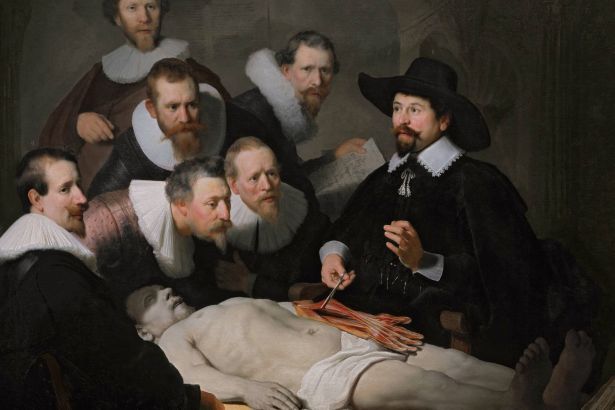A period in the advent of enlightenment: no cadaver in medical faculties

According to a report published in El Arabiya, medical faculty students in Iran cannot study on cadavers during their education; religious judges prevent faculties from providing cadavers, and students find the solution to buy “black market cadaver”.
Allegedly, the cadavers sold on the black market have exceeded 3 thousand dollars, and the ones bearing the cost are the students who combine their pocket money.
And, how is the situation in Turkey where 85 medical faculties are located?
Why and in what steps is cadaver use important in medical education? Can students find the opportunity to work on the cadaver in the country where many new medical faculties are opened? How do medical faculties reach the cadavers they need? And the most curious question for many; which way should be followed by those who want to donate their bodies for scientific education and research?
HUMAN: THE REAL, NOT A MIRACLE
Anatomy knowledge is the basis of medical education. In the courses given in the first years of the undergraduate education, the human body goes out of being a miracle and becomes understandable with all reality.
Prof. Dr Halil İbrahim Açar from Anatomy Department of Ankara University Faculty of Medicine (AUFM) points out that the knowledge of anatomy is a critical point in medical education in not only undergraduate education but also in specialisation education. In particular, surgical branches primarily experience their studies on cadavers; the health care workers who will produce the labour to save a human’s life become acquainted with the all details of a tissue they will intervene thanks to the cadaveric. Dr Açar indicates that no model can provide as much detail as a real tissue.
On the other hand, the discipline of medicine, the necessary care and sensitivity to a tissue and the careful practice of a collective effort are gained on cadavers rather than models.
At this point, one of the parameters determining the quality of education is how many students can work with a cadaver sample. During the undergraduate education, where there are 20 students around a table, it is not very possible for the students to touch the tissue; the students are more likely to be audiences. Emphasising that the number should be limited to 5-6 students, Dr Açar states that this number should be even less in post-graduate education.
OBTAINING CADAVER BECAME HARD AFTER 2005
Dr Açar says that they did not experience any problem about supplying cadaver until 2005. This issue is regulated in favour of education with a cadaver, which is a model without alternative. The Law no 2238 on “Harvesting, Storage, Grafting, and Transplantation of Organs and Tissues” ensures that, unless otherwise legated, the bodies which are unclaimed and not related with the judicial prosecution shall be kept for up to 6 months and be given to the related higher education institution to be used for scientific research and education. A similar amendment has been made in paragraph (c), Clause 3 of Article 10 of the Regulation on Implementation of Forensic Medicine Institute Law.
This amendment perfectly runs until 2005 for AUFM and there were no failure to disrupt the teaching model of the faculty. In fact, the faculty became a centre for supplying cadavers to medical faculties in the periphery.
However, after this date, the cadaver supplying from the Forensic Medicine Institute became difficult. Dr Açar says that the meetings with the institution and a number of authorities have failed and that the most important resources for the cadaver supplying are not working at this time. Saying that at most 1 or 2 cadavers come from the Forensic Medicine Institution in a year, Dr Açar emphasises that a scientific and competent education cannot be provided with these numbers. Therefore, another solution has been sought and the cadavers are started to be imported. However, this situation leads to “budget problems”. Given the difficulties universities have had in allocating funds for scientific research, providing cadaveric fees at the worth of about 10-15 thousand dollars is not easy. Sometimes, in order to reduce costs, not whole cadaver but the body part to be studied is imported. Importing cadavers through intermediary companies confines scientists who are supposed to carry out academic activities into a circle of trade.
On the other hand, many courses organised after the undergraduate education for physicians are known with their high fees. The biggest cost item in these courses is also the large amounts spent on the cadaver supply.
HOW CAN YOU BECOME A DONOR?
Aren’t there someone who donate their bodies to serve scientific studies?
Dr Açar says there are donors but this cannot solve the experienced problem. Because there is no legal regulation guaranteeing the operation of this donation mechanism after the person has died. You go to a medical faculty, you fill the form to donate your body, but after that, your family-relatives need to take a step on the subject. If the family is not convinced, the decision of the person is broken at this point, and this valuable step is unfortunately made meaningless.
Another point is how the cadaver studied on is preserved after the study has finished. Dr Açar states that says that after studying on an average of 5-10 years, the cadavers are closed and committed to the ground.
Cadaveric studies, which have irreplaceable importance at the base of medical education in every period of history, are very valuable for the training of qualified health workers. The future health care workers need this information in order to be able to offer a better life.
In spite of all the difficulties, applying to the anatomy department of a medical faculty and making a unique contribution to scientific knowledge as a donor seems to be the only possible way to assign a meaning to life with death.



